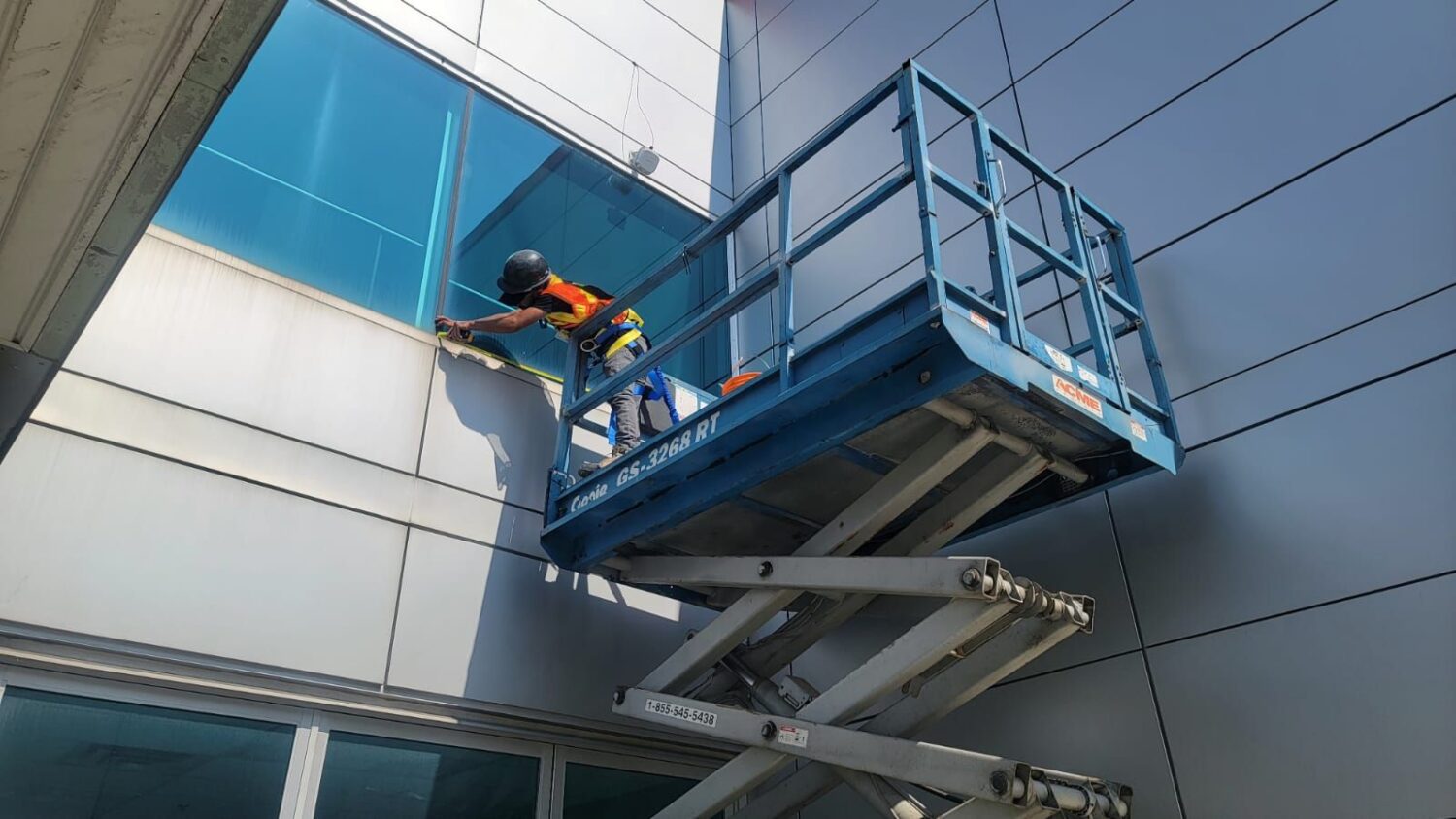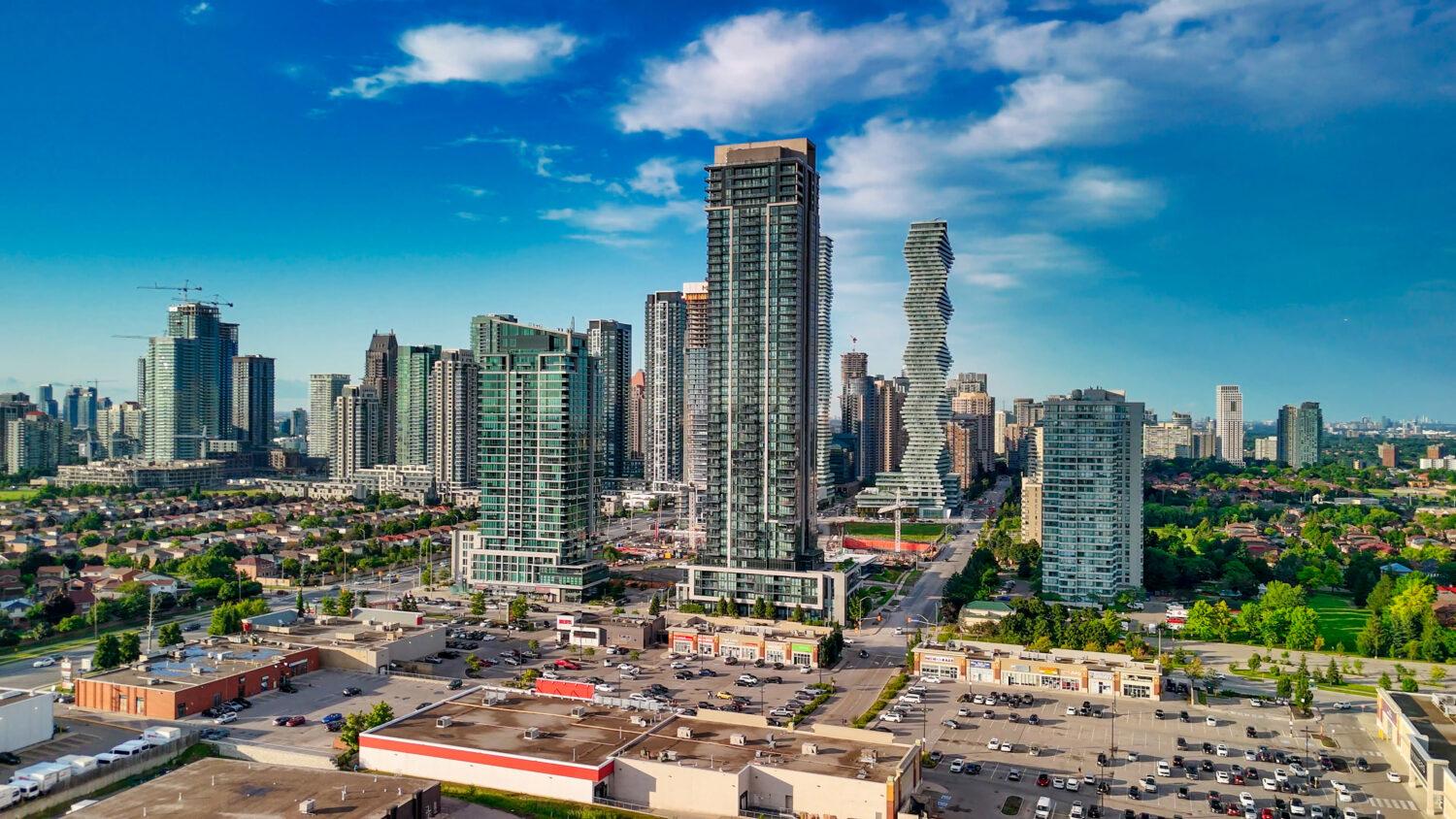Curtain walls add sleek, modern appeal to commercial high-rises, but keeping these large glass facades clean requires careful planning, coordination, and professional expertise. Exposed continuously to wind, rain, dust, pollutants, and organic matter, curtain walls accumulate grime that can cause permanent stains and structural wear if neglected.
For property managers, maintaining curtain walls is a critical task. Beyond aesthetics, regular cleaning and inspection impact energy efficiency, tenant satisfaction, safety, and long-term operational costs. This guide provides property managers with an understanding of key cleaning practices, inspection signs to watch for, scheduling recommendations, and tips for managing contractors effectively.
Why Cleaning Curtain Walls Is Essential
Curtain walls serve as both a striking design feature and a protective barrier. They allow natural light in, improve airflow, and reduce heat loss, but their performance can be compromised by constant exposure to dust, bird droppings, acid rain, pollen, and construction debris. Left uncleaned, curtain walls can suffer from:
Proper upkeep prevents costly restoration projects and emergency repairs while boosting the building’s curb appeal, fostering tenant confidence, and maintaining a professional image.


Signs Property Managers Should Monitor
Knowing what to look for helps property managers schedule cleanings proactively and catch issues before they escalate:
Regular walkthroughs, combined with professional inspections, ensure these indicators are caught promptly.
Cleaning Frequency Recommendations
Cleaning frequency depends on building location, surrounding environment, and the level of exposure to pollutants. For buildings situated in low-pollution areas, a standard approach is to schedule cleaning one to two times per year. However, structures located near highways, industrial zones, construction sites, or waterfronts typically require more frequent attention, with quarterly cleanings recommended to address their higher exposure levels.
Ideal cleaning windows are spring and fall, when the weather is stable, temperature extremes are minimal, and wind or precipitation rarely disrupt the cleaning process. By timing seasonal cleanings for these periods, property managers can effectively remove damaging salt, pollen, and other contaminants that break down seals and coatings, helping to preserve the performance and appearance of the curtain wall facade.
Property Manager Responsibilities in Curtain Wall Maintenance
Property managers play a pivotal role in ensuring curtain wall integrity and appearance through:
Effective communication with tenants and building staff reduces disruptions and ensures occupant safety.

Cleaning Methods and Access Techniques
Before curtain wall cleaning, it’s vital to inform tenants about timing and any access restrictions. Arrange staging zones safely, unlock rooftop or access points, and coordinate with building security. These measures minimize tenant disruption and support a safe working environment for cleaning teams.
Curtain walls incorporate treated glass, silicone seals, and aluminum frames, all requiring delicate care:
Typical access methods chosen by contractors include:
Property managers should ensure contractors are insured, trained in relevant safety standards, and equipped for the specific building.
Inspection and Preventive Maintenance Coordination
Every cleaning cycle presents an important opportunity for property managers to conduct thorough condition assessments of their curtain walls. These assessments should focus on critical areas, including the integrity of sealants and caulking to prevent leaks, as well as the presence of water stains or streaking inside curtain wall panels that may indicate moisture intrusion. Inspecting the frame alignment and joint stability helps ensure the structural soundness of the curtain wall system.
Additionally, property managers must be vigilant for signs of corrosion or deterioration on metal components, which can compromise the facade’s durability. Early detection of such issues through routine inspections allows for timely preventive repairs, avoiding costly damage escalation. Implementing corrective measures like resealing joints or replacing worn gaskets effectively maximizes the longevity and performance of the curtain wall facade.
Documentation and Warranty Management
Maintaining comprehensive service records is crucial for property managers overseeing curtain wall maintenance. Detailed logs establish a clear and organized maintenance history, which proves invaluable when filing warranty claims. These records offer transparency into the maintenance timeline and verify that scheduled cleanings and repairs have been properly performed.
Keeping accurate and consistent records is essential for ensuring a seamless transition when staffing changes occur or multiple contractors are involved in ongoing facade care. Service logs should include key details such as cleaning dates, the specific methods employed, condition observations supported by photographs, and full contractor contact information. Such comprehensive documentation fosters accountability and enables clear communication among all parties responsible for the curtain wall’s maintenance.

Tenant Coordination and Safety Measures
Before curtain wall cleaning, it’s vital to inform tenants about timing and any access restrictions.
Arrange staging zones safely, unlock rooftop or access points, and coordinate with building security. These measures minimize tenant disruption and support a safe working environment for cleaning teams.
Proactive Repair and Weatherproofing
Property managers should promptly address wear and damage to prevent costly structural repairs. Small issues like cracks, sealant failures, and water infiltration need timely attention. Regular inspection reports help guide necessary repairs such as resealing joints, replacing gaskets, or restoring aluminum frames to maintain airtightness and water resistance.
Using high-quality, weatherproof sealants protects curtain walls from UV damage, moisture, and temperature changes, extending their lifespan and improving energy efficiency. Including sealant and caulking replacement in the maintenance plan is essential. Proactive repairs and weatherproofing ensure curtain walls remain visually appealing and structurally sound, preserving the building investment for years ahead.
Maximizing Value With Curtain Wall Maintenance
Investing in a comprehensive curtain wall maintenance program not only maintains aesthetics but also delivers significant cost benefits. High-performance curtain walls enhance energy efficiency by reducing heat loss and demand on HVAC systems, translating into lower utility bills and operational costs. Buildings with well-maintained curtain walls experience fewer mechanical failures and reduced need for emergency repairs, lowering overall maintenance expenses.
Furthermore, curtain walls contribute to enhanced occupant comfort through improved natural lighting and stable indoor temperatures. This positively impacts tenant satisfaction and retention, which are critical success factors in property management. A well-kept facade also increases property value by improving curb appeal and demonstrating a commitment to sustainable, high-quality building management.
Final Thoughts
High-rise curtain wall cleaning and maintenance is an essential responsibility for property managers who want to protect their investment, enhance tenant satisfaction, and reduce costly repairs. With the right schedule, professional contractors, and thorough inspections, managers can ensure their curtain walls stay clean, safe, and efficient. When it’s time to arrange expert cleaning services, Glass Repair Canada offers reliable, skilled teams with specialized expertise in cleaning high-rise curtain walls and commercial building facade cleaning.
Contact Glass Repair Canada today to schedule your service and keep your building looking immaculate while extending the life of your curtain walls.

